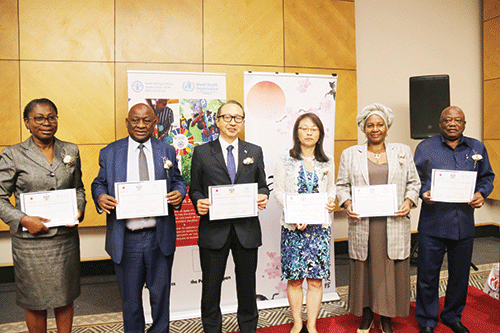Ohangwena governor Sebastian Ndeitunga says the level of poverty and hunger the region is experiencing is worrisome, especially to vulnerable groups like women and children.
The governor said this at the Japan Supplementary Budget Funding Joint Project launch earlier this week.
The first project encompasses the World Health Organisation teaming up with the health ministry, which will implement the project, titled ‘Increasing Access to Quality Nutrition and Protection Services for Vulnerable Population including Women and Children in Omaheke, Khomas and Kunene regions’. The value of the funding is N$9.3 million for 12 months.
The second project, the Food and Agriculture Organisation (FAO), together with the agriculture ministry will implement a campaign, dubbed ‘Emergency response to enhance resilience and mitigate climate-induced impacts on livelihoods, food and nutrition security of the most vulnerable households in Namibia (Kavango East, Kavango West and Ohangwena regions)’.
The value of this funding is N$14.2 million for 12 months.
“The office of the governor and the regional council is always busy identifying vulnerable members of the community who are mostly affected by malnutrition and assisting with the drought relief programme to ensure everyone has access to put something on the table,” Ndeitunga told Vital Signs.
According to the 2023 Population and Housing Census Preliminary results, the Ohangwena region is the second, largest populous region in the country, with an estimate of 337 729 inhabitants.
Ndeitunga added that with the assistance of the government, they are trying to revive Aquifer 2 to provide an opportunity for the population in the region to develop some agricultural projects to have quality products like tomatoes and watermelons.
“That process is taking long, but all opportunity that can be used to improve access to nutrition for everyone will be attempted,” he assured.
He added that with the Japanese joint funding project, they expect those who have been identified to benefit from this programme, and need such partnerships to ensure the programme is successful.
Japan’s ambassador to Namibia Nishimaki Hisao said the need for support in the health and agricultural sectors is great since everybody needs health-care. The ambassador added, “It is said that more than 70% of the Namibian population depends on agriculture directly or indirectly”.
“Governors, stay close to the communities and motivate them to ensure that the knowledge and tools they receive are put to maximum use to ensure that not only their livelihoods are improved, but that the food security situation in their regions is improved,” implored Hisao.
Health minister Dr Kalumbi Shangula noted that social safety nets must be robust to respond effectively and meaningfully to the needs of vulnerable communities who are constrained by climatic conditions such as lack of water, tools and seeds.
“This project will bring about a positive impact, leading to three improved overall health outcomes, reduced vulnerability to diseases and enhanced cognitive development, thereby paving the way for a healthier, more prosperous future for the inhabitants of these regions. The Omahake region has been experiencing serious cases of malnutrition, with many deaths recorded last year,” he stated.
The minister said Japan has a track record of practical support to address malnutrition and improve the health and well-being of vulnerable populations in Namibia.


